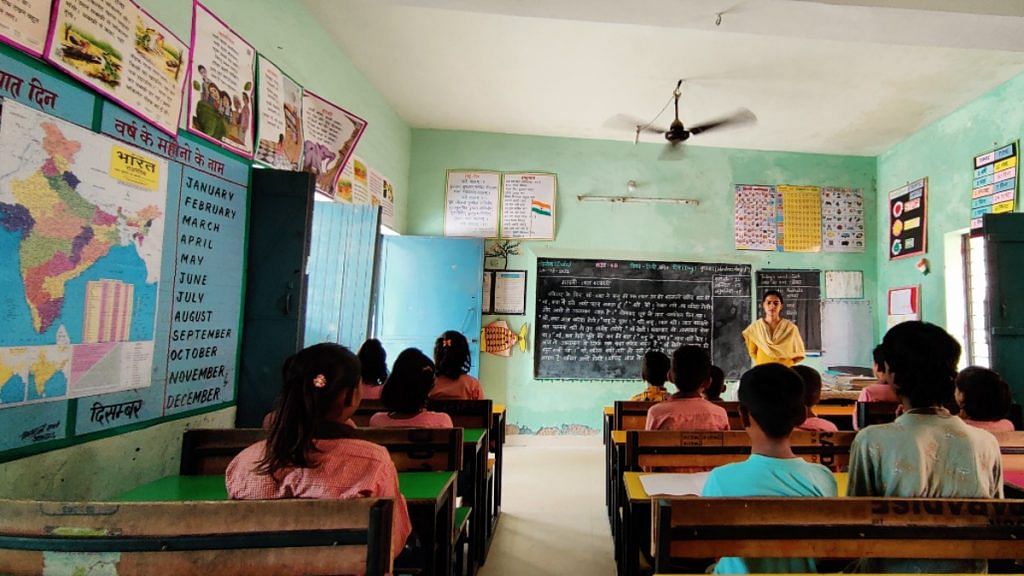Thank you dear subscribers, we are overwhelmed with your response.
Your Turn is a unique section from ThePrint featuring points of view from its subscribers. If you are a subscriber, have a point of view, please send it to us. If not, do subscribe here: https://theprint.in/
Centre piece of Finance Minister’s budget announcement regarding school education was increased budget allocation to education of around 2.9% of GDP, and of hiring more school teachers for government schools, which were universally seen as positive steps, though inadequate, by everyone.
We argue that both these are irrelevant to the need for improving our school education which is rated at the bottom of international comparisons of school performance. In comparison, Bangladesh had moved ahead of India in girl’s education by 1995, which is at the source of Bangladesh catching up with India, in terms of per capita income in spite of starting in 1971 far behind. This success of Bangladesh is mostly due to women’s increased role in the economy, in garment factories, and micro-financed backed tiny enterprises.
It is not widely recognized that India spends more than 5.5% of GDP on education, considering both public and private spending, while ensuring less than 10 years of universal education, if one factors that a high school educated Indian student does not have learning attainment of even grade 6 student of well performing schooling countries. Most OECD and ASEAN countries 5.5% or less of GDP, but ensure universal high quality education for 14 years. This implies that India gets 50% educational results for similar education spending.
Various studies have shown that educational outcomes in an average private schools are not significantly better than in Government schools, but such schools, now enrolling more than 30% of Indian children, spend less than 25% of expenditure per child in government schools.
Unless inefficiency of overall Indian schools, at around 50% of well performing schools worldwide, and of Indian Government schools at around 25% of Indian private schools, any step to do more of ongoing pattern of spending can only be regarded as foolhardy. It is akin to Government pumping more money in loss making Air India or BSNL OF 2020s, while India made much better use of its scarce resources in private airlines and telecom companies.
Two factors contribute to poor performance of schooling sector in India. Foremost is the provision of licensing, which gives power to schools to issue grade completion certificate, without any regulation on the quality of education provided. In fact, quality of education is not even permitted to be measured under Right to Education Act, till completion of grade 8 education. Second source of inefficiency of Indian schooling system is very high salary of teachers in Government schools, which stands at around 500% to 700% of the norm in OECD countries, and 200-300% of the norm in developing countries, when expressed as multiple of country’s per capita income.
Without introducing structural reforms to reduce the negative impact of above two features, (i) licensed power of schools to issue grade passing certificate without any measure of learning, (ii) extremely high salary of government teachers, whose performance accountability is tough to enforce, no improvement in Indian schools is possible by pumping more money in school education. Unfortunately, New Education Policy too has initiated limited structural reforms only for college and higher education, while recommending more of the same for school education system.
Two simple measures could dramatically change the school sector performance. One would be universal examination of learning at the end of grade 3-5-8, in addition to universal high school examination. Second would be employment of government school teachers in PPP mode, whereby private provider of teaching services will be asked to fill in requirements of new teachers in government schools.
Central Advisory Board on Education (CABE), comprising Central and State education ministers has already endorsed holding of tests at grades 3-5-8, in spite of provision of RTE, so it should be possible for the government to implement this reform, which shall reduce licensing based power and lack of accountability of all schools. Hiring of teachers in government schools on PPP basis, through non-profit private providers of education, and linked to teacher’s performance, would require political courage, and commitment to children welfare, that most State and Central government have so far not displayed.
Also read: SubscriberWrites: ‘Democracy 2.0’ — A new definition of democracy is needed in changing times
These pieces are being published as they have been received – they have not been edited/fact-checked by ThePrint.
